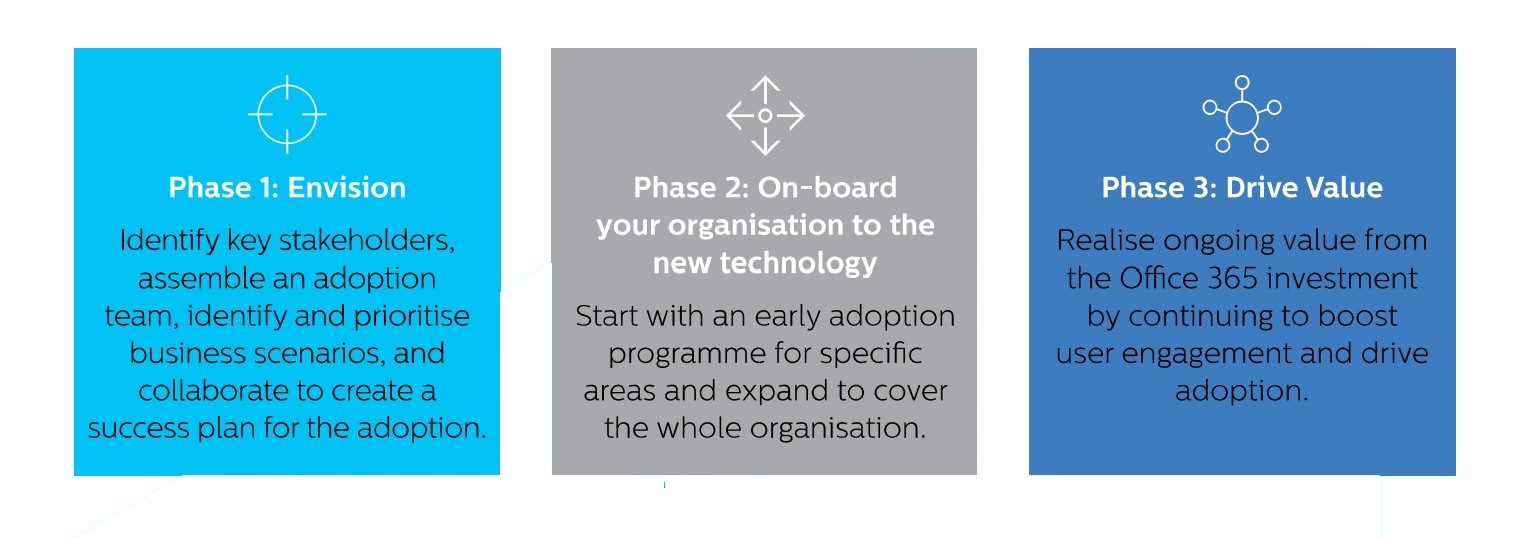Many businesses across the world are embracing cloud-based services, with thousands enjoying the productivity, efficiency, and cost benefits of using Microsoft 365 (previously, Office 365). But many organisations, particularly SMBs, can be nervous about moving to the cloud.
However, advising them with a simple set of step-by-step guidelines can help put a customer’s mind at rest. The first stage is to ensure that people across the organisation understand the benefits and embrace the solutions. The business needs to convey what’s in it for them.
Here’s a step-by-step adoption plan:
- Create a team of key stakeholders that can drive and effect change, a team of committed individuals representing a cross-section of the organisation.
- Transformation projects are more successful when there is a visible executive sponsor – key leaders such as the CEO have the greatest influence on company culture and can communicate the value and benefits of new technology and way of working throughout the organisation.
- Create success owners to ensure people use the service and get value from it.
- Use Office 365 apps and services throughout planning and rollout to familiarise the team and promote success to the wider organisation.
- Run workshops with department leads, project managers, IT, and other stakeholders to brainstorm how Office 365 can be used.
- Create formal success criteria to measure the impact of the Office 365 rollout and identify business key performance indicators (KPIs) – for example, reduced costs, increased customer satisfaction, improved employee engagement, reduced order process time.
- Generate awareness and excitement – pre-rollout and following launch.
- Champion examples of Office 365-derived collaboration and teamwork and share using Yammer or Microsoft Teams.

